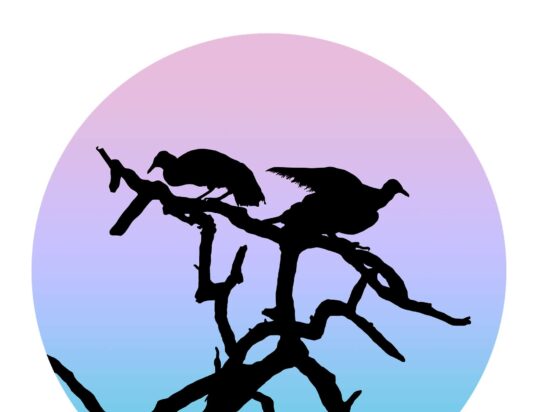Earlier this year, I had fun with mystery columns on a local man, woman, and business. Now see if you can guess this mystery bird.
The bird whose scientific name is Cathartes aura flew directly over my head last night as I was finishing up some gardening chores. A second, third, fourth, and a fifth followed, landing on the top of the white pines in our backyard.
I didn’t know that these birds with chicken-like feet roosted in groups similar to wild turkeys. When I researched them, mentalfloss.com (February 20, 2017) I read, “They are not likely to be in your backyard unless something has died or else you have a very large backyard.” We have one-half acre, not exactly large, but our small water garden attracts an amazing number of birds and wildlife.
This year has been exceptional for bird watching. We’ve seen bluebirds, a hummingbird, a cedar waxwing, a rose-breasted grosbeak, and even a scarlet tanager. A goldfinch nested in a decorative box attached to our siding and we’ve had fun peeking in on the open-mouthed youngsters.
I hear the rustling of heavy wings and watch as one of the raptors resettles in the treetop. I’d once spooked a female of this species while on a spring nature walk in a valley which included the Dells’ famous sandstone cliffs. She flew out of a small cave where I assume she laid the customary two eggs or possibly they’d hatched out and she was off to find them food.
I flashed back to a time I was privileged to see a larger version of this bird, the American condor. Though the two aren’t related, the condor I’d seen at Utah’s Zion National Park is similar in looks except for the size difference and the condor’s striking white patches under its wings.
Our mystery bird is actually a relative of the stork. A sixth joins the group. I wonder how they communicate. How do birds let one another know that the party that night will be at the Laundrie backyard?
I admit to getting a creepy feeling when I’m among these birds whose scientific name means cleansing breeze. I once visited Devil’s Lake’s heron rookery in early summer when the fledglings were days away from leaving the nest. Rambunctious young herons could easily push a sibling out of the nest where it would fall—possibly to its death. I sighted a dozen or so of our mystery birds just waiting for that to happen. It’s true that they do a great service for our planet, cleaning up dead animals before they rot and cause disease, but it makes my skin crawl.
My research reveals their digestive tract can easily handle bubonic plague, rabies, distemper, and other nasties. Their heads are featherless so that they can freely stick them into the gore and not worry about their feathers getting contaminated. They have a way to disinfect their feet which are always walking on top of rotting flesh. They excrete waste on them! The uric acid kills the bacteria.
Their talons aren’t sharp which is why they have to scavenge rather than kill fresh prey. Their amazing sense of smell allows them to detect a rotting carcass from thousands of feet in the air. They are intelligent enough to pair up with other raptors who can’t smell but can kill.
More of these gregarious birds with a six-foot wingspan fly in and land until I count a dozen. I learn that a group of these raptors is called a committee, kettle, or wake. Their average lifespan is twenty years and they can travel up to 200 miles a day. I’ve learned a great deal, but I still don’t know why they are in my backyard. Instead of freaking out, I decide to feel special. After all, it’s not everyone who gets regular visits from bald, red-headed scavengers, our world’s specialized sanitation engineers, the amazing turkey vultures.


4 Replies to “Mystery Bird”
I love birds, too, Amy! I’ve only seen turkey vultures in flight. Thanks for sharing your interaction and the cool facts!
Coming from someone who shares awesome science facts on her blog, https://susanberkkoch.com, your praise means a lot. Thanks for reading and following.
This was a fun one! I now know more about the turkey vulture than I know about any other bird! I just want to know what’s rotting in the Laundrie’s back yard. LOL.
Ha! Just to let you know, hubby and I did spend a few hours cleaning up behind the shed. It needed it. We didn’t find anything rotting, but we did discover a critter living under it. (I’m saving the big reveal for a future column.)